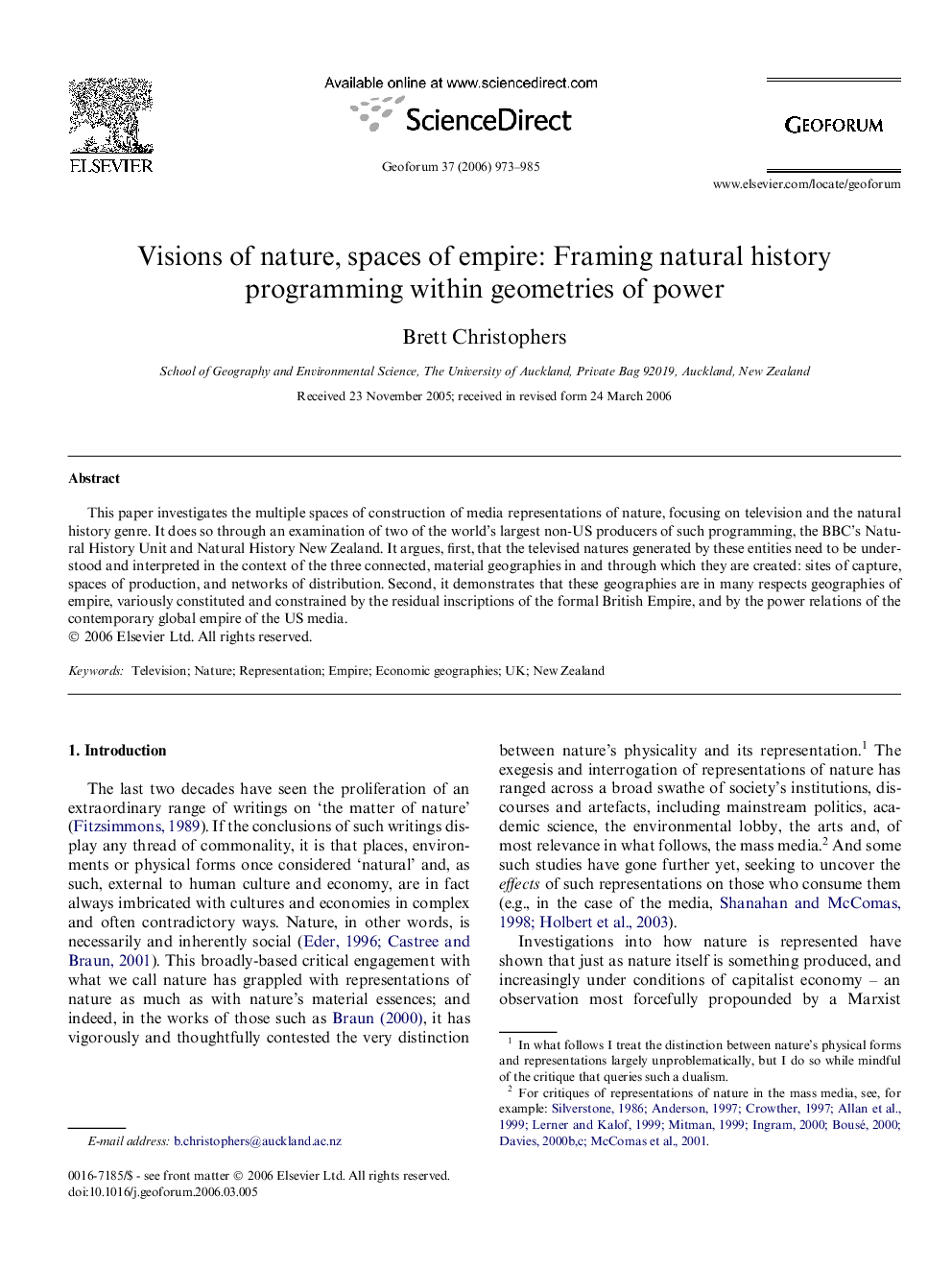| Article ID | Journal | Published Year | Pages | File Type |
|---|---|---|---|---|
| 5075229 | Geoforum | 2006 | 13 Pages |
Abstract
This paper investigates the multiple spaces of construction of media representations of nature, focusing on television and the natural history genre. It does so through an examination of two of the world's largest non-US producers of such programming, the BBC's Natural History Unit and Natural History New Zealand. It argues, first, that the televised natures generated by these entities need to be understood and interpreted in the context of the three connected, material geographies in and through which they are created: sites of capture, spaces of production, and networks of distribution. Second, it demonstrates that these geographies are in many respects geographies of empire, variously constituted and constrained by the residual inscriptions of the formal British Empire, and by the power relations of the contemporary global empire of the US media.
Related Topics
Social Sciences and Humanities
Economics, Econometrics and Finance
Economics and Econometrics
Authors
Brett Christophers,
